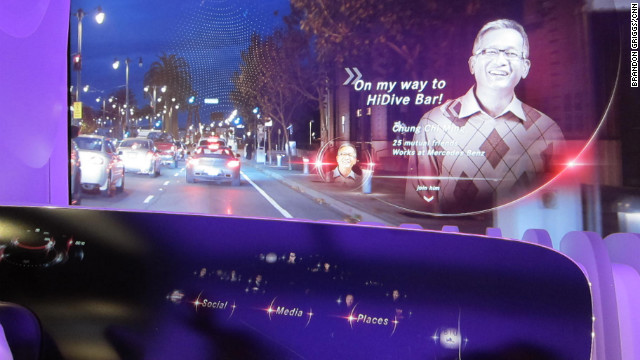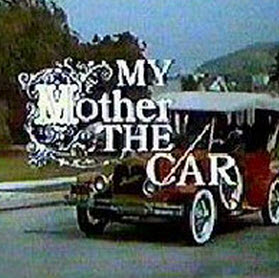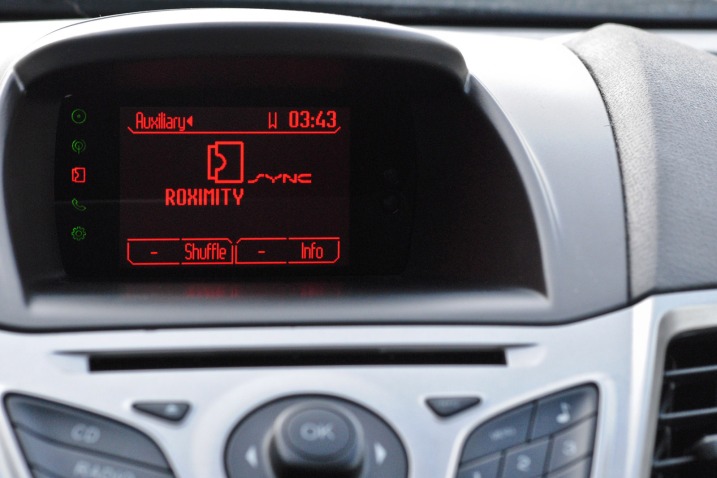Beyond texting: augmented-reality windshields — what could go wrong?
January 16, 2012

Mercedes' gesture-controlled augmented reality, Red Bull optional (credit: Mercedes-Benz)
What? You thought distracted drivers texting on cell phones and swerving erratically is a problem? That’s so 2011.
Imagine a future in which icons flash on your car windshield, hologram-style, as your car approaches restaurants, stores, historic landmarks or the homes of friends, effuses CNN.
Simply point your hand at them, and the icons open to show real-time information: when that bridge over there was built, what band is playing at that nightclub on the left, whether that new café up the street has any tables available. Wave your hand again, and you’ve made a restaurant reservation.
Wow, it’s like Second Life, or Fringe, or something, dude!
BTW, note the text message in the photo above: “On my way to HiDive Bar!” Oh yeah, now there’s the perfect combo: AR, booze, and driving.
“Driver, put down the Kinect and step out of the vehicle!”
‘Driving while intoxicated’
Mercedes-Benz showed off this wacky vision of the future of driving at CES in Vegas, where wacky is the new normal. (Mercedes’ “mBrace” — get it? — a $200/year system that will let drivers run customized apps like Yelp and Facebook controlled by voice commands or on a dashboard touchscreen), targeted to Generation Y.

An upload gone awry? Seemed like a good idea at the time. (Credit: Metro Goldwyn Mayer)
We’re working on a new generation of vehicles that truly serve as digital companions,” said Dieter Zetsche, head of Mercedes-Benz Cars, in a keynote speech at CES. “They learn your habits, adapt to your choices, predict your moves and interact with your social network.” OK, “My Mother the Car” on acid. Got it.

Roximity, a smartphone app that provides real-time deals and specials relevant to a user’s location, demonstrated on Ford SYNC at the 2012 International CES (credit: Ford)
Not to be all uptight or anything, Ford also plans to display real-time discounts relevant to a driver’s location, and Audi and Kia also plan Web-based dashboard entertainment systems.
In December, the National Transportation Safety Board recommended a ban on all use of mobile devices while driving, including hands-free devices, Technology Review points out. “One board member compared the use of phones in cars to driving while intoxicated.”
Well, at least Kia is doing one rational thing: a “user-centered driving concept”: an infrared LED and camera to monitor the driver’s face for alertness. The system would recognize whether the driver’s eyes are opened or closed, safeguarding against an accident caused by the driver falling asleep. OK, that’s nice, but how about recognizing when the driver is distracted by dopey AR displays and applying a taser or something?
Here’s an app I want: one that warns me when a Ford, Mercedes, Audi, or Kia — or one of those autonomous cars — is approaching so I can swerve the hell out of the way.
